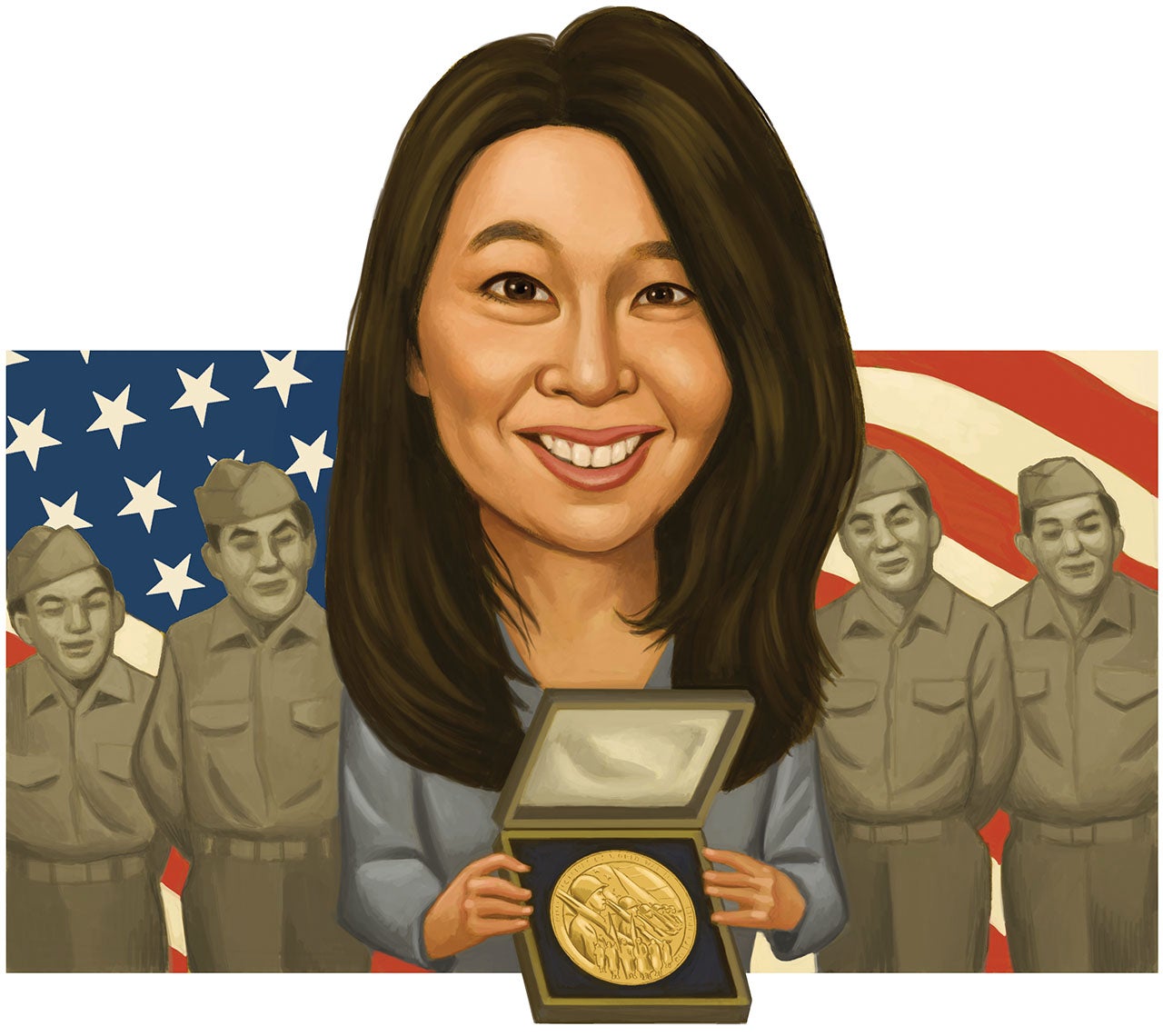ALUMNI PROFILE
THE SOLDIERS' VOICE
Christine Sato-Yamazaki ensures the stories of Japanese American World War II veterans are not forgotten.
By Eric Butterman
Grandparents sometime exaggerate for effect when passing on stories to their grandchildren. But that wasn’t necessary for Dave Kawagoye, grandfather of Christine Sato-Yamazaki ’92, when telling tales of his World War II service in the U.S. Army’s segregated 442nd Regimental Combat Team, risking his life for a country where many of his fellow Japanese Americans, including his own family, were incarcerated in concentration camps based solely on their ancestry. Sato-Yamazaki, inspired by her grandfather’s experience, has shined a spotlight on the experiences of Japanese American soldiers like Kawagoye, so Americans can learn about their bravery. As executive director of the Washington, D.C.-based National Veterans Network since 2010, she preserves the stories of the roughly 33,000 Japanese Americans who served during WWII, many of whom have passed away.
In 2010, with the help of her group’s advocacy, Congress passed and President Barack Obama signed into law legislation awarding the Congressional Gold Medal to the 100th Infantry Battalion, 442nd Regimental Combat Team, and Military Intelligence Service. Together with six Japanese American WWII veterans, Sato-Yamazaki witnessed President Obama sign the bill in the Oval Office.
“Those segregated units served overseas in Italy and France and served with valor,” Sato-Yamazaki said. “They were able to become the most decorated military unit in U.S. military history for their size and length of service,” she added, noting Japanese American soldiers also served in the Pacific as translators, their contributions remaining classified until 1973.
Sato-Yamazaki, who has been working out of her home in Torrance, California, during the pandemic, said she always knew on some level she would be involved in perpetuating the legacy of the Japanese American WWII soldier experience. With a bachelor’s degree in business administration, she has devoted her career to leading national initiatives to preserve soldier stories and establish educational programs. She previously served as the president and CEO of Go For Broke National Education Center and founded its oral history program that houses 1,000 videotaped soldier interviews. She has also raised millions of dollars and credits her college education with helping her develop the skills to find funding.
One of National Veterans Network’s current projects is a collaboration with the Smithsonian Asian Pacific American Center that features an online exhibit highlighting soldier stories, and a curriculum for elementary and middle school students. The group will also likely soon unveil an exhibit at the National Museum of the United States Army in Virginia. Sato-Yamazaki’s hope is that her work will promote equality and help fight racism toward Asian Americans in the United States.
“My family immigrated to this country in 1896, so I’m actually a fourth-generation Japanese American,” she said. “Sometimes people will ask me, ‘Where are you from?’ I’ll say I was born in the San Francisco Bay Area, and that’s not what they’re trying to ask. They’re looking for a different answer.”
Sato-Yamazaki, who lived with her grandparents for four years, said she will never forget the sacrifice made by her grandfather and his fellow soldiers.
“I remember as a child seeing the 442nd patches and a piece of cloth material from the glider (he flew in the war) hanging in his house. It was clear he was proud of his U.S. military service.”
